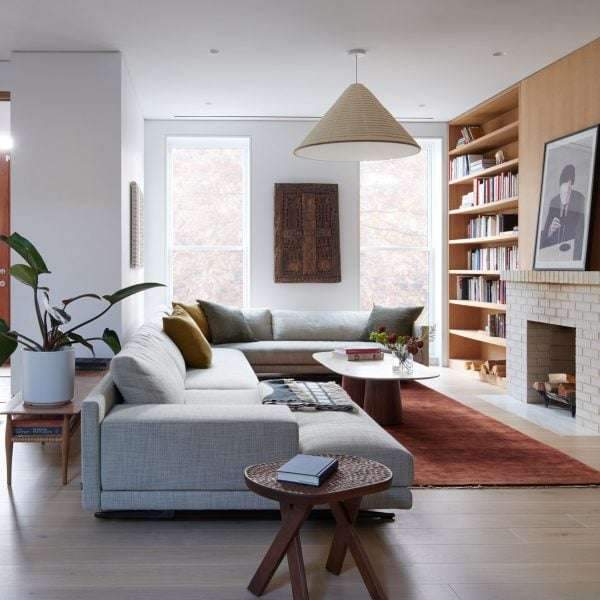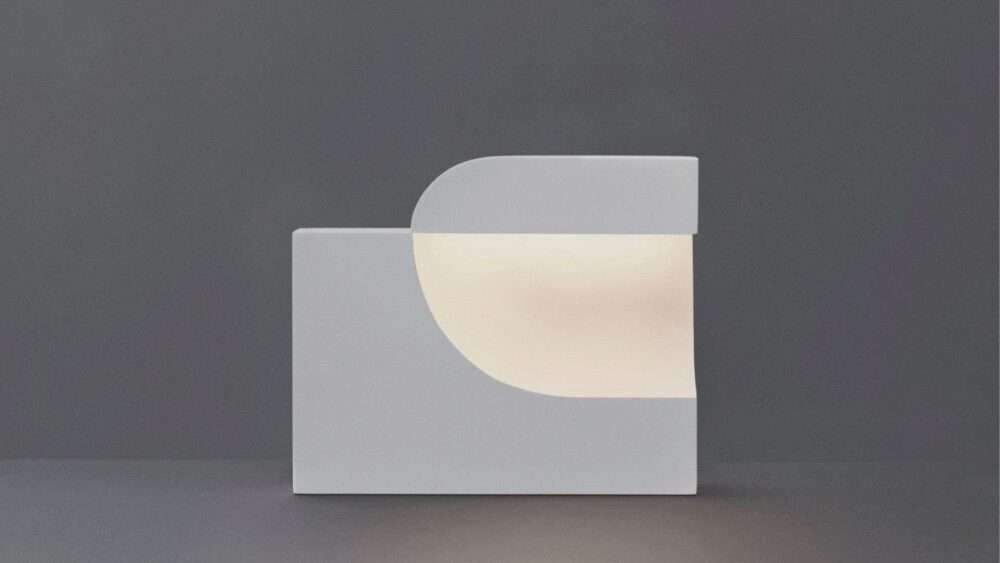S2B Studio, a local practice in north London, has designed Cooper House as a personal project by its founders, a husband-and-wife team. Nestled in the garden of a listed building, Cooper House pays homage to the site’s history, which was once the domain of a cooper—a skilled artisan who crafted barrels.
A Self-Designed Home Rooted in Craftsmanship
The two-storey structure of Cooper House features a timber framework and a natural material palette dominated by wood. This choice of materials evokes a sense of craftsmanship and draws visual inspiration from ancient wooden temples, aiming to create a tranquil and harmonious atmosphere. “The materiality and pared-back palette of Cooper House were inspired by ancient wooden temples, aiming to create a tranquil and harmonious environment,” explained Joan Lim, co-founder of S2B Studio. Natural materials like African iroko timber, oak, and limestone are used to enhance the home’s connection to nature and foster a serene environment.
Architectural Design Reflects Historical Context
Encased in a brick facade and topped with a pitched roof, Cooper House integrates seamlessly into its surroundings. Large, evenly spaced windows punctuate the brick exterior, framing views of the outside street, which is separated from the house by a brick wall with black gates. “The design respects the street’s character with a modest side-gable roof, blending seamlessly into the neighbourhood’s architectural form,” Lim noted. The perforated flooring and the pitched roof combine to create an airy ambiance that celebrates open living.
Slatted Floor Creates a Visual Connection Between Levels
Inside, Cooper House blurs the boundaries between work and living spaces. A semi-open floor on the upper level, made from slats of African iroko wood, connects visually with the ground-floor living and dining areas. The slats rest on dark grey beams, allowing natural light to filter through and creating a dynamic play of light throughout the day. The kitchen is situated adjacent to the dining area, where the perforated ceiling transitions into a more enclosed space, providing a distinct division within the open layout.
“The core aim of the design was to address evolving work and living needs by challenging conventional spatial dynamics,” Lim stated. The design connects the two levels with a perforated floor, reflecting the studio’s response to the shifting demands of living and working in a post-pandemic world.
Thoughtful Use of Wood Enhances Interior Ambiance
Throughout Cooper House, wooden finishes and custom joinery contribute to a warm and cohesive interior. Floor-to-ceiling cupboards line one wall of the kitchen and continue into the bedrooms, where wooden joinery alternates with rough plaster finishes. This combination of materials creates a neutral backdrop that highlights the natural wood elements and enhances the home’s overall aesthetic.
A bespoke timber spiral staircase connects the two levels, leading to an upper-level sunroom that sits atop the slatted floor. Tall windows and skylights brighten the sunroom, while large roof lights and expansive portrait windows offer skyward and garden views. “At night, the pitched soffit space is illuminated by a simple strip light, preserving the purity of the design,” Lim noted. This lighting design casts reflections off the oak finishes, giving the home a warm, lantern-like glow in the neighbourhood.
Private and Functional Spaces with a Personal Touch
Bedrooms and utility spaces are located on the north-facing side of the home, away from the semi-open slatted floor. Each bedroom includes an ensuite bathroom, with floors and walls lined in grey tiles that match the textural plastering used throughout the rest of the house. Additional features of Cooper House include a north-facing terrace beyond the bedrooms and a rear-facing art studio, which contains furniture handmade by S2B Studio.
“Designing Cooper House was a deeply personal process for us as an architect couple,” Lim shared. “We meticulously crafted every detail, managed the project ourselves, and even made our own furniture in the rear art studio, ensuring the home perfectly balances practicality and aesthetic serenity.”
Photos: Jay Yang
Finally, find out more on ArchUp:










